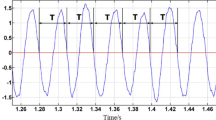Abstract
This paper deals with the issue of automatic learning and recognition of various conditions of a machine tool. The ultimate goal of the research discussed in this paper is to develop a comparehensive monitor and control (M&C) system that can substitute for the expert machinist and perform certain critical in-process tasks to assure quality production. The M&C system must reliably recognize and respond to qualitatively different behaviours of the machine tool, learn new behaviors, respond faster than its human counterpart to quality threatening circumstances, and interface with an existing controller. The research considers a series of face-milling anomalies that were subsequently simulated and used as a first step towards establishing the feasibility of employing machine learning as an integral component of the intelligent controller. We address the question of feasibility in two steps. First, it is important to know if the process models (dull tool, broken tool, etc.) can be learned (model learning). And second, if the models are learned, can an algorithm reliably select an appropriate model (distinguish between dull and broken tools) based on input from the model learner and from the sensors (model selection). The results of the simulation-based tests demonstrate that the milling-process anomalies can be learned, and the appropriate model can be reliably selected. Such a model can be subsequently utilized to make compensating in-process machine-tool adjustments. In addition, we observed that the learning curve need not approach the 100% level to be functional.
Similar content being viewed by others
References
Machining Data Handbook, Metcut Research Associates, Inc., Cincinnati, OH, 1980.
Workshop on Information Technology for Manufacturing and Concurrent Engineering, DARPA, Stanford University, Palo Alto, CA, 1992.
Altintas, Y. and Yellowley, I.: In-process detection of tool failure in milling using cutting force models,J. Eng. Industry 111 (1989) 149–157.
Antsaklis, P. J. and Passino, K. M.: Introduction to intelligent control systems with high degrees of autonomy, in K. M. Passino and P. J. Antsaklis, (eds),Introduction to Intelligent and Autonomous Control., Kluwer Academic Publishers, Dordrecht, 1992.
Diei, E. N. and Dornfeld, D. A.: Acoustic emission from the face milling process — the effets of process variables,J. Eng. Industry 109 (1987) 92–99.
Diei, E. N. and Dornfeld, D. A.: Acoustic emission sensing of tool wear in face milling,J. Eng. Industry 109 (1987) 234–240.
Fu, H. J., DeVor, R. E. and Kapoor, S. G.: Model for the prediction of the force system in face milling operations,J. Eng. Industry 106 (1984) 81–88.
Gamache, R. W. and McCabe, J. T.: A critical review of options for tool and workpiece sensing, Technical Report SE-89-01, Mechanical Technology, Inc., 1990.
Garcia, H. E., Ray, A. and Edwards, R. M.: Reconfigurable control of power plants using learning automata,IEEE Control Systems Magazine 11(1) (1991) 85–92.
Kaelbling, L. P.: Learning in embedded systems, Technical Report TR-90-04, Teleos Research, CA, 1990.
Koenigsberger, F.:Design Principles of Metal-Cutting Machine Tools, Macmillan, New York, 1964.
Kokar, M. M., Keshav, S. N., Gopalraman, S. and Lirov, Y.: Learning in semantic control, inProc. 27th Conf. Decision and Control, IEEE, 1988, pp. 1812–1817.
Kokar, M. M. and Reeves, J. J.: Qualitative monitoring of time-variant physical systems, inProc. 29th Conf. Decision and Control, IEEE, 1990, pp. 1504–1508.
Kokar, M. M. and Reveliotis, S. A.: Integrating qualitative and quantitative methods for model validation and monitoring, inProc. 1991 IEEE Int. Symp. Intelligent Control, 1991.
Kokar, M. M. and Reveliotis, S. A.: Learning to select a model in a changing world, inProc. 8th Int. Workshop Machine Learning, 1991, pp. 313–317.
Kokar, M. M. and Reveliotis, S. A.: Reinforcement learning: Architectures and algorithms,Int. J. Intelligent Systems (1992), pp. 875–894.
Kolarits, F. M. and DeVries, W. R.: Model of end milling for process controller simulation,J. Eng. Industry 113 (1991) 176–183.
Kuipers, B. J.: Qualitative simulation,Artificial Intelligence J. 29 (1986) 289–338.
Lauderbaugh, L. K. and Ulsoy, A. G.: Dynamic modeling for control of the milling process,J. Eng. Industry 110 (1988) 367–375.
Lauderbaugh, L. K. and Ulsoy, A. G.: Model reference adaptive force control in milling,J. Eng. Industry 111 (1989) 13–21.
Meystel, A.: Intelligent control, inEncyclopedia of Physical Science and Technology, 1989 Yearbook, pp. 343–359, Academic Press, New York, 1989.
Montgomery, D. and Altintas, Y.: Mechanism of cutting force and surface generation in dynamic milling,J. Eng. Industry 113 (1991) 160–168.
Moriwaki, T. and Tobito, M.: A new approach to automatic detection of life of coated tool based on acoustic emission measurements,J. Eng. Industry 112 (1990) 212–218.
Narendra, K. S. and Thathachar, M. A. L.:Learning Automata: An Introduction, Prentice-Hall, 1989.
Osuri, R. H., Chatterjee, S. and Chandrashekhar, S.: On-line condition monitoring of tool wear in end using acoustic emission,Int. J. Production Res. 29 (1991) 1339–1353.
Rangwala, S. and Dornfeld, D.: Sensor integration using neural networks for intelligent tool condition monitoring,J. Eng. Industry 112 (1990) 219–228.
Smith, S. and Tlusty, J.: An overview of modeling and simulation of the milling process,J. Eng. Industry 113 (1991) 169–175.
Saridis, G. N.: Intelligent robotic control,IEEE Trans. Automatic Control AC-28(5) (1983) 547–557.
Stephanou, H. E., Meystel, A. and Luh, J. Y. S.: Intelligent control: From perception to action, inProc. IEEE Int. Symp. Intelligent Control, 1988.
Tlusty, J. and Andrews, G. C.: A critical review of sensors for unmanned machining,Ann. CIRP,32(2) (1983) 563–572.
Wright, P. K. and Bourne, D. A.,Manufacturing Intelligence, Addison-Wesley, Reading, MA, 1988.
Wright, P. K. and Greenfeld, I.: Open-architecture manufacturing — the impact of open systems, Technical Report, NYU, Courant Institute of Mathematical Sciences, NYC, NY, 1989.
Author information
Authors and Affiliations
Rights and permissions
About this article
Cite this article
Kokar, M.M., Letkowski, J. & Callahan, T.F. Learning to monitor a machine tool. J Intell Robot Syst 12, 103–125 (1995). https://doi.org/10.1007/BF01258381
Received:
Accepted:
Issue Date:
DOI: https://doi.org/10.1007/BF01258381




